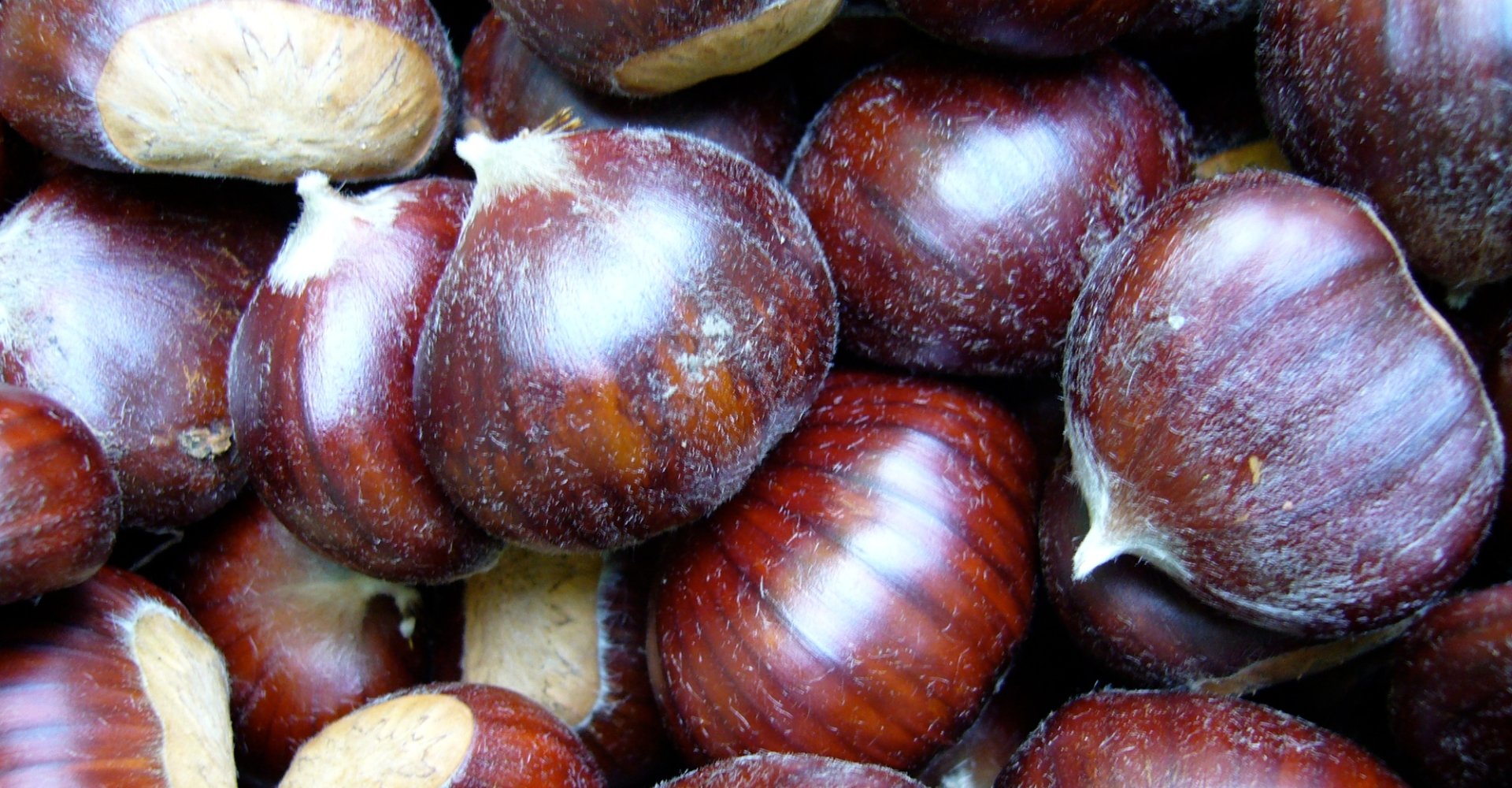PGI Chestnut of Mount Amiata

A sweet, delicate chestnut from the volcanic soils of the Amiata
Characteristics
The planting of chestnuts in the Mount Amiata area takes place at an elevation between 350 and 1000 metres above sea level, on soils derived from the disintegration of acid volcanic rocks: these ideal environmental conditions give the product specific organoleptic characteristics. Synthetic fertilizers are prohibited during the productive phase, and the harvest, which takes place from the middle of September to the middle of November, has to be done by hand or at the very least with a mechanical system which protects the product. Production levels are limited to 12kg per plant, 1800kg per hectare.
The chestnut is produced in three varieties: Marrone, Bastarda rossa and Cecio. The bigger nuts are oval and can be recognised by their poorly articulated apex, their red tinged colour with darker streaks. Its flavour is sweet and delicate.
The planting of chestnuts in the Mount Amiata area takes place at an elevation between 350 and 1000 metres above sea level, on soils derived from the disintegration of acid volcanic rocks: these ideal environmental conditions give the product specific organoleptic characteristics. Synthetic fertilizers are prohibited during the productive phase, and the harvest, which takes place from the middle of September to the middle of November, has to be done by hand or at the very least with a mechanical system which protects the product. Production levels are limited to 12kg per plant, 1800kg per hectare.
The chestnut is produced in three varieties: Marrone, Bastarda rossa and Cecio. The bigger nuts are oval and can be recognised by their poorly articulated apex, their red tinged colour with darker streaks. Its flavour is sweet and delicate.
Food and wine
The nuts, either boiled or roasted, marry perfectly with sweet muscat wines, gelato and custards.
The chestnuts can be dried to turn them into flour to make castagnaccio and chestnut polenta.
The nuts, either boiled or roasted, marry perfectly with sweet muscat wines, gelato and custards.
The chestnuts can be dried to turn them into flour to make castagnaccio and chestnut polenta.



